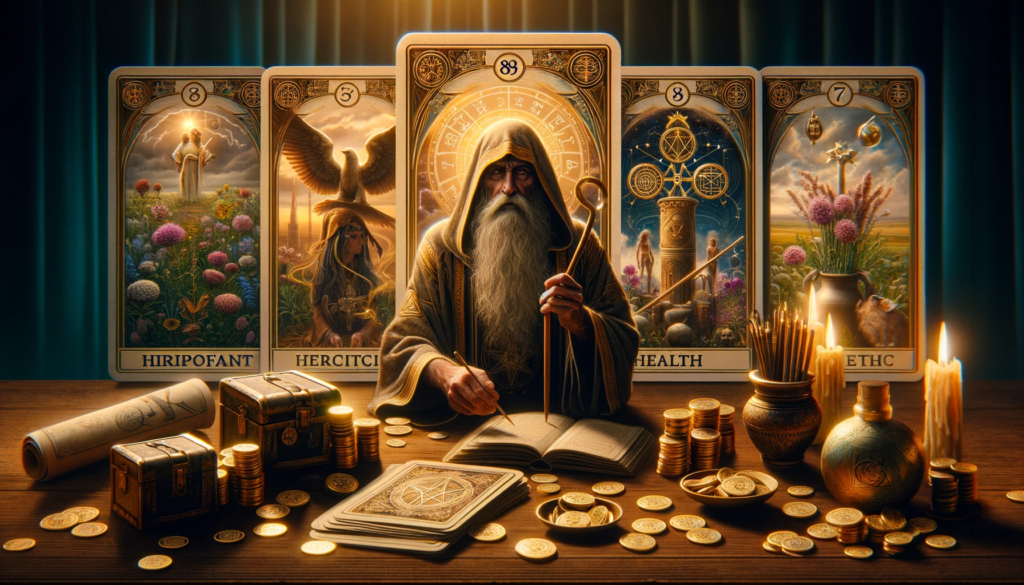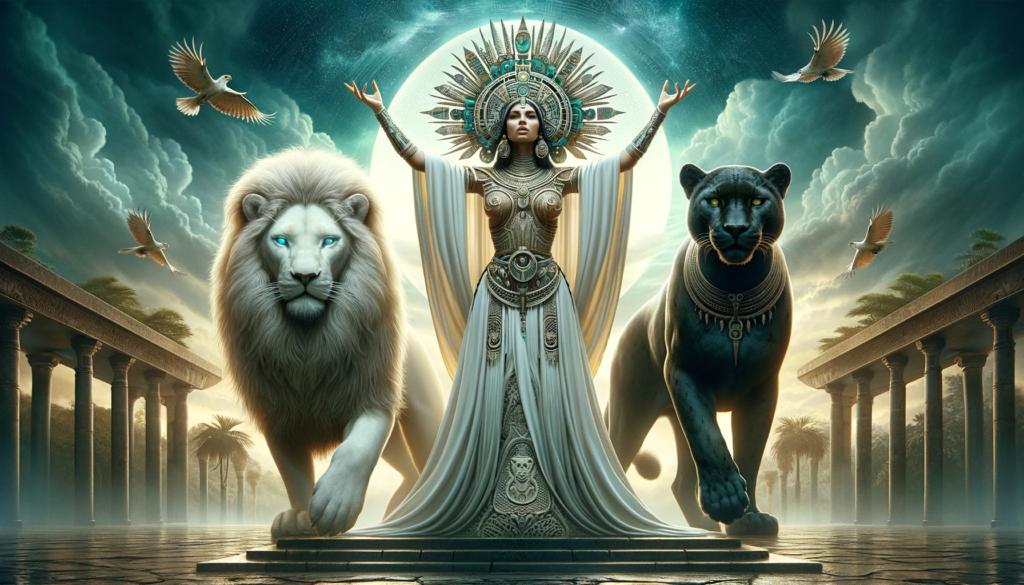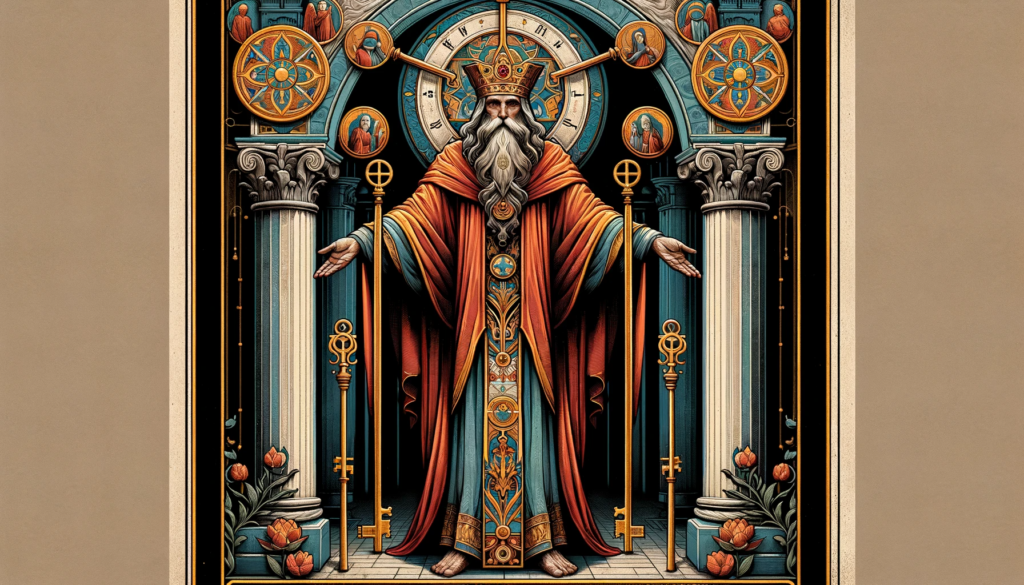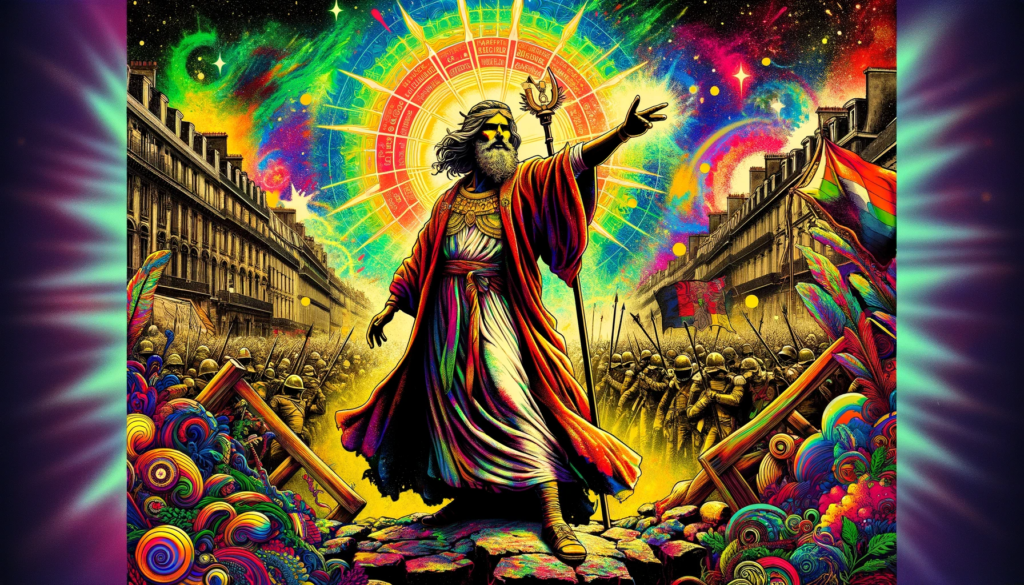Welcome to The Hierophant tarot card—a magnetic source of spiritual guidance perched at the crossroads of conformity and non-conformity!
This card beckons you to ponder the delicate threads that weave together the tapestry of traditional wisdom and the desire for personal sovereignty. Do you find comfort in the well-trodden paths of those who’ve gone before or does the weight of cold doctrine feel like it’s crushing your soul?
The Hierophant tests your convictions, challenging you to either uphold the sacred customs or dare to dance to the rhythm of innovation.
Key Takeaways
- The Hierophant tarot card is a powerful emblem within the Major Arcana, signifying the interplay of tradition and rebellion.
- This card acts as a masculine counterpoint to spiritual authority, casting light on whether one should adhere to or diverge from long-standing practices.
- Through its symbolism, The Hierophant encourages contemplation on the established beliefs that shape our reality, inviting a deeper spiritual connection.
- The card’s visual cues—papal regalia, a sacred temple setting—highlight the often-complex relationship between organized religion and spirituality.
- Depending on its orientation, it may either underscore the comfort found in conformity or the liberation discovered in challenging the status quo.
- The Hierophant tantalizes the seeker’s sense of spirituality, prodding them to either embrace time-honored values or else cultivate personal freedom.
Table of Contents
Upright Meanings
When you draw The Hierophant in an upright position, you’re encountering a card that resounds with the echoes of traditional beliefs and established customs. This card’s upright tarot card interpretation signifies a compelling call toward conformity and adherence to societal norms. As you contemplate this symbol, it’s worth considering how it reflects upon various aspects of your life.
In the sphere of love and commitment in relationships, The Hierophant is a beacon of stability and security. It advises you to embrace shared values and may even be signaling the bells of a future marriage. This card is a nod to the power of unity and the fortitude that comes from walking a shared path with another.
On the financial front, it endorses the age-old wisdom of saving and investing wisely, which might be a gentle nudge to be cautious about jumping onto trends without due consideration.
Professionally, The Hierophant fosters a community where mentorship and teamwork are not just valued but essential for success. It’s a call to forge ahead collectively rather than individually, emphasizing knowledge-sharing as a source of growth and advancement.
Health-wise, it encourages you to trust in proven healing methods and wellness practices, emphasizing a preference towards conventional medical advice over alternative treatments.

- Relationships: Stability, shared values, potential for marriage
- Finances: Recommended frugality, traditional methods of wealth building
- Career: Emphasis on teamwork, mentorship, and knowledge sharing
- Health: Adherence to standard medical advice, established wellness routines
Across these various dimensions of life, The Hierophant in its upright position acts as a voice of reason that favors convention over the novel. It encapsulates traditional values with an unwavering commitment to systems that have withstood the test of time.
Reversed Meanings
When you draw The Hierophant in its reversed position, it signals a turning point where the need for personal autonomy and the desire to escape the shackles of convention becomes paramount. It’s a call to reflect on your deepest beliefs and to consider taking unconventional approaches that resonate more closely with your true self. Here’s what this could mean for various aspects of your life:
- Personal Beliefs: Reexamine what has been handed down to you culturally and spiritually. Are these beliefs still serving you, or is it time to establish your own set of values?
- Social Roles: If you’re feeling confined by the roles society expects you to play, this card asks you to shed those layers and redefine your identity on your own terms.
- Relationships: A reversed Hierophant can indicate a relationship that’s become too rigid, prompting a need for flexibility and open communication to rekindle connection.
- Career: In your professional life, the card suggests looking beyond conventional career paths and perhaps pioneering a new approach or innovation.
In the tableau of your life, The Hierophant, in reversed presentation, champions the maverick spirit. It’s about forging ahead into territories that the orthodox may deem outlandish. This card advocates for a life less ordinary, one that is crafted on your terms and fueled by the knowledge that there is virtue in reversed tarot card interpretation, power in autonomy, and brilliance in the non-conforming.
| Aspect | Traditional Approach | Reversed Tarot Suggestion |
|---|---|---|
| Personal Growth | Following established life progressions | Carving a new, personalized path of development |
| Relationship Dynamics | Conforming to societal relationship norms | Seeking a unique connection that defies conventions |
| Career Trajectory | Adhering to tried-and-tested career ladders | Championing creative professions or groundbreaking ventures |
| Belief Systems | Maintaining the status quo | Questioning and reformulating personal beliefs |
Ultimately, The Hierophant reversed is a clarion call to honor your authentic self. It invites you to challenge the norms, push boundaries, and live a life that feels sincerely and unequivocally yours. Embrace this opportunity for growth and remember that sometimes, the most profound wisdom comes from the journey inward and the courage to stand apart from the crowd.

Symbols in The Hierophant
As you gaze upon The Hierophant card, you might wonder about the rich tapestry of religious iconography and spiritual symbolism that adorns it. The images before you hold deep-seated meanings, resonating with subconscious layers and presenting profound crossroads symbolism.
The central figure, a sage acting as the intermediary between higher wisdom and the earthly realm, stands confidently between two pillars. This placement is not by chance; it’s a deliberate symbol of balance and duality, a common motif across various spiritual practices.
- The triple crown he wears isn’t just a sign of authority but signifies control over the body, mind, and spirit—the three states of existence.
- His right hand extends in a blessing, with two fingers pointing skyward and two downward, suggesting a connection between the heavens and the earth, encouraging you to explore the spectrum between celestial aspirations and worldly experiences.
Beneath his feet lay keys crossed in an ‘X’ formation, a sight that should stir your curiosity. These crossed keys aren’t merely decorative; they’re a clear nod to unlocking hidden truths and secrets, a reminder of the Hierophant’s role as the keeper—and granter—of sacred knowledge.
| Symbol | Implication | Reflective Question |
|---|---|---|
| Pillars | Bridge between the sacred and the profane | How do you balance your spiritual beliefs with worldly responsibilities? |
| Triple Crown | Authority over mind, body, spirit | In what ways do you seek to rule over these aspects within yourself? |
| Blessing Gesture | Union of higher and lower realms | Are you integrating your higher ideals into your daily life? |
| Crossed Keys | Access to hidden knowledge | What mysteries are you seeking to uncover? |

The Hierophant invites you to consider these symbols as more than mere illustrations. They’re an intricate part of the tarot’s wisdom, prompting you to explore beneath the surface and discover the interconnectedness of your spiritual journey and everyday existence. Remember, each symbol is a doorway to deeper understanding, urging you to look within and ponder the pillars of your life.
Examples of The Hierophant in Pop Culture
The striking figure of The Hierophant has permeated various forms of media, invariably coloring the narratives with its unique blend of authority and nonconformity. This archetype’s influence elicits a diverse spectrum of character portrayals, challenging audiences to evaluate their own spiritual and societal allegiances. Below we will delve into the contrasting representations in pop culture that illuminate both the traditional and disruptive facets of this tarot icon.
Positive Examples
As a testament to the tarot influence in media, the spiritual mentor archetype finds its way into the hearts of stories where characters impart age-old wisdom to guide the protagonist.
- Professor Albus Dumbledore (Harry Potter series): As the wise headmaster of Hogwarts, Dumbledore represents tradition, wisdom, and the passing down of knowledge, all key aspects of the upright Hierophant.
- Captain America (Marvel Comics): Steve Rogers/Captain America often embodies traditional values such as patriotism, duty, and moral integrity, reflecting the upright Hierophant’s association with ethics and morality.
- Atticus Finch (To Kill a Mockingbird): Finch represents moral integrity, adherence to ethical principles, and respect for social institutions like the law, mirroring the Hierophant’s qualities.
- Yoda (Star Wars): Yoda, as a wise and ancient Jedi Master, represents the passing down of traditional knowledge and values within the Jedi Order, in line with the Hierophant’s themes.
- Dowager Countess of Grantham (Downton Abbey): Known for her adherence to traditional values and customs, she represents the Hierophant’s theme of maintaining established social norms.
- Mr. Feeny (Boy Meets World): As a teacher and mentor, he imparts wisdom and life lessons to his students, reflecting the Hierophant’s role in education and moral guidance.
These characters, along with others alike, anchor their narratives with traditionalist characters that provide structure and counsel.
Negative Examples
In the realm of popular culture, the reversed Hierophant often manifests as characters who misuse their authority and knowledge. Unlike their positive counterparts who challenge norms for the greater good, these figures often embody the shadow side of tradition and power. They represent dogmatism, authoritarianism, and the darker aspects of institutional control, serving as cautionary tales of what happens when power is not tempered by wisdom and ethical considerations.
- Dolores Umbridge (Harry Potter series): Umbridge is an archetype of tyrannical authority, enforcing oppressive rules and punishing those who defy traditional structures, embodying the darker side of institutional power.
- Palpatine (Star Wars): Emperor Palpatine represents the corrupting influence of power and the dark side of authority, using his position for personal gain and absolute control.
- President Snow (The Hunger Games): Snow is a symbol of totalitarian rule, using his authority to oppress and control, demonstrating the negative aspects of rigidly enforced norms and traditions.
- Sauron (The Lord of the Rings): Sauron embodies the misuse of knowledge and power, seeking to dominate and control through fear and oppression.
- Nurse Ratched (One Flew Over the Cuckoo’s Nest): Nurse Ratched represents the dark side of institutional authority, exercising strict control and repressing individuality in the guise of maintaining order.
Did you notice that Palpatine also appeared on The Magician’s list of Negative Examples? And President Snow made The Emperor’s Naughty List?
Characters, just like real people, are complex — much the same way Life can be complex. Characters (and people!) often embody different archetypes at different times, and sometimes several at once.
BONUS: Positive Reversed Examples
Speaking of things being complex, just because a character embodies the reversed meaning of a tarot card doesn’t necessarily mean they are bad, dark, or evil.
The counterculture movement of the 1960s in American history is depicted through various forms of media, celebrating figures who stood against normativity, changing the zeitgeist forever. As the following examples show, that’s not always a bad thing!
- Bob Dylan: A quintessential figure in the 1960s counterculture, Dylan’s music and lyrics rejected mainstream values, advocating for social change and challenging political norms.
- Janis Joplin: An icon of the counterculture, Joplin’s music and lifestyle rejected traditional feminine norms and celebrated individuality and freedom.
- Dr. Martin Luther King Jr.: Although not a ‘rebel’ in the conventional sense, King’s non-violent resistance and profound challenges to the racial norms of the time align with the reversed Hierophant’s themes of challenging the status quo and advocating for profound social change.
- Angela Davis: An activist, scholar, and leader in the civil rights movement, Davis challenged established systems of power, particularly in relation to race and gender.
- Timothy Leary: Known for his phrase, “Turn on, tune in, drop out,” Leary became a symbol of 1960s counterculture through his advocacy of psychedelic drug use as a means of challenging conventional thinking and societal norms.
- Jim Morrison (The Doors): Morrison’s poetic lyrics and rebellious lifestyle made him a countercultural icon who challenged conventional morality and authority.

In the dance between reverence and resistance, these examples underscore the profound extent to which The Hierophant’s dualities shape modern storytelling. The characters inspired by this tarot card challenge you to question, aspire, and rebel in ways that mirror life’s complex journey towards personal truth and authenticity.
Call to Action
The Hierophant is more than just a tarot card; it’s a metaphor for the crossroads in your life, where tradition battles innovation, and conformity duels with individuality.
Reflect on your life’s direction: will you walk the well-trodden path or carve a new trail brimming with embracing change? The path you choose should resonate with your deepest ethical convictions and spiritual yearnings.
Your engagement with The Hierophant doesn’t merely forecast your future; it offers a mirror to your soul, reflecting deeply entrenched beliefs and values. It’s an opportunity for spiritual self-exploration, pushing you beyond the familiar horizon and toward the budding potential of what could be. Each reading is a chapter in your ongoing saga, a moment to heed the wisdom of the past or to eschew it for the thrill of the untamed.
In summary, The Hierophant challenges you to stand firmly in your truth. Whether that truth aligns with the pillars of heritage or the allure of the unprecedented, your journey is one of discovery and courage.
Look within, question freely, and let the spirit of The Hierophant guide you to a richer understanding of your life’s narrative. Forge your journey thoughtfully, for every step is a stroke on the canvas of your existence.
